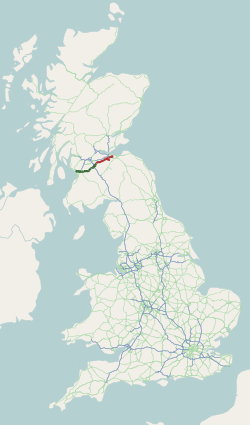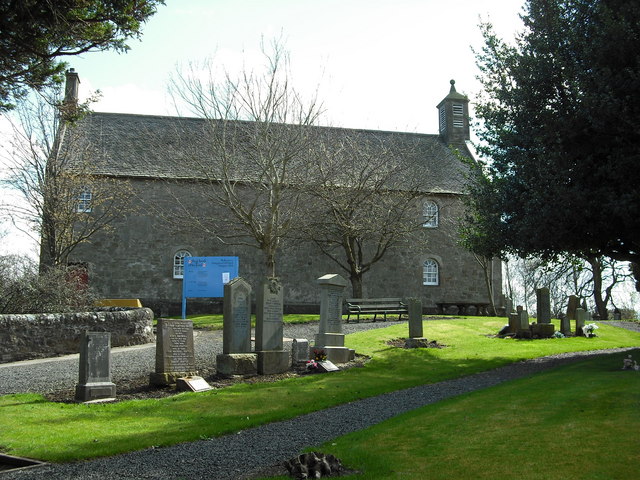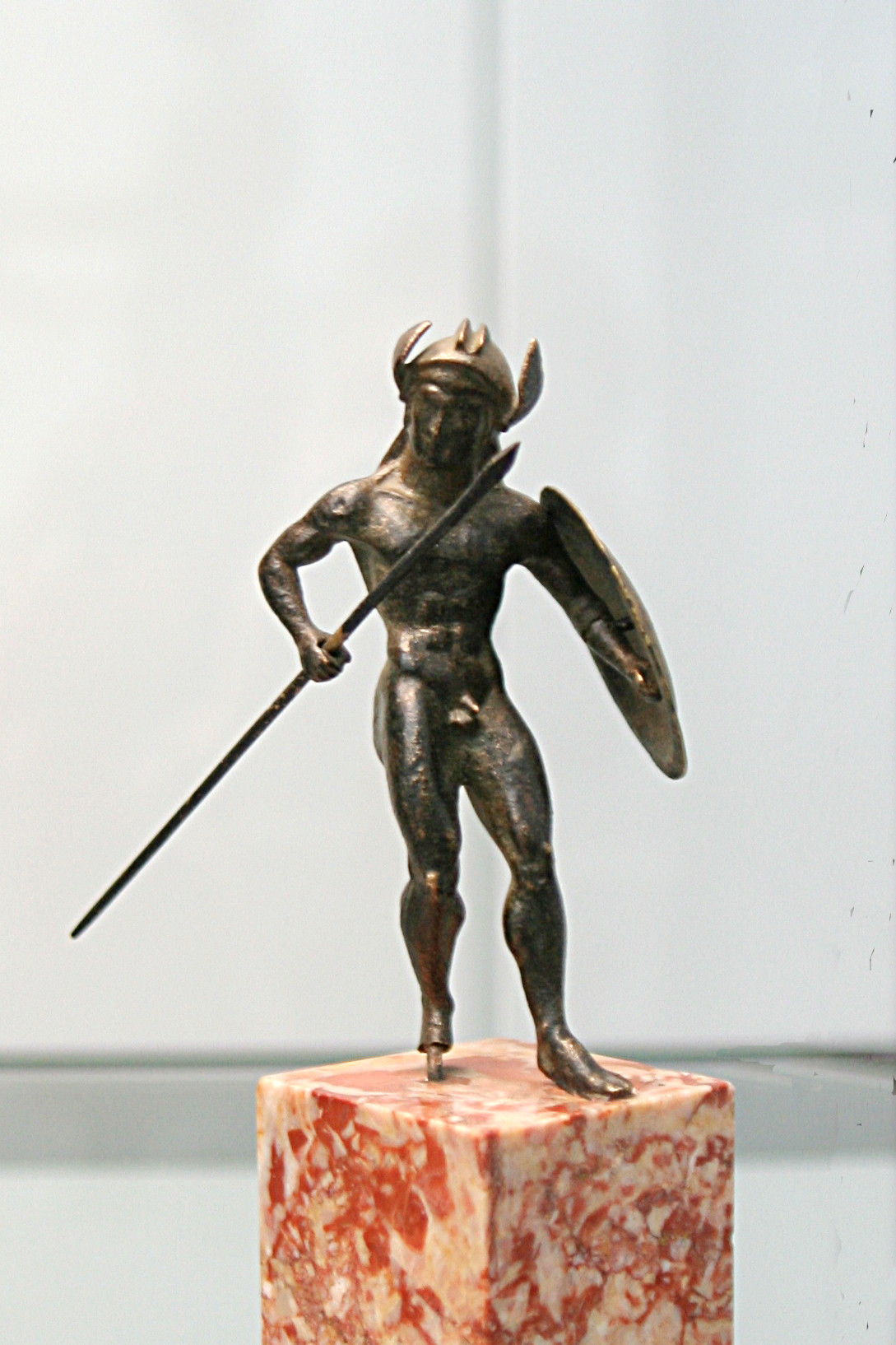|
Wilkieston
Wilkieston is a small village in West Lothian, Scotland. It is located on the A71 road, north of Kirknewton, south-west of Ratho and east of Livingston. To the north-west of the village is Bonnington House, a 19th-century country house. To the north-east of the village are the remains of Hatton House, medieval home of the Lauder family, which was demolished in 1955. Linburn Park was a country house and estate in Wilkeston, located to the south of the village that was demolished in 1955. The estate is now home to the Linburn Centre, which is run by charity Scottish War Blinded. The centre provides assistance to adults who have been members of the armed forces and now have a visual impairment. Military Museum Scotland is a military history museum in Wilkieston that covers Scottish military history from the First World War World War I (28 July 1914 11 November 1918), often abbreviated as WWI, was one of the deadliest global conflicts in history. Belligerents in ... [...More Info...] [...Related Items...] OR: [Wikipedia] [Google] [Baidu] |
West Lothian
West Lothian ( sco, Wast Lowden; gd, Lodainn an Iar) is one of the 32 council areas of Scotland, and was one of its shires of Scotland, historic counties. The county was called Linlithgowshire until 1925. The historic county was bounded geographically by the River Avon, Falkirk, Avon to the west and the River Almond, Lothian, Almond to the east. The modern council area occupies a larger area than the historic county. It was reshaped following local government reforms in 1975: some areas in the west were transferred to Falkirk (council area), Falkirk; some areas in the east were transferred to Edinburgh; and some areas that had formerly been part of in Midlothian were added to West Lothian. West Lothian lies on the southern shore of the Firth of Forth and is predominantly rural, though there were extensive coal, iron, and shale oil mining operations in the 19th and 20th centuries. These created distinctive red-spoil heaps (locally known as "bing (mining), bings") throughout the ... [...More Info...] [...Related Items...] OR: [Wikipedia] [Google] [Baidu] |
Linburn Centre
The Linburn Centre is a day centre for blinded war veterans at Wilkieston in West Lothian, Scotland, around west of the city of Edinburgh. The centre is located within the estate of Linburn House, a country house which was demolished in 1955. It is operated by the charity Scottish War Blinded. History The Scottish National Institution for the War Blinded was established in 1915 to care for servicemen blinded in the First World War. The Institution purchased the Linburn estate in 1944 and developed housing, workshops and recreational facilities within the grounds of the house. Linburn House itself was used as a hospital before being demolished in 1955. 16 purpose-built homes were constructed for blinded veterans and their families. In 2002 the hostel at Linburn, which provided nursing accommodation for blind veterans, was closed and the residents re-housed. In 2009 it was announced that a new centre would be built and that the design of the centre, by Page\Park Architects, had b ... [...More Info...] [...Related Items...] OR: [Wikipedia] [Google] [Baidu] |
A71 Road
The A71 is a major road in Scotland linking Edinburgh with Lanarkshire and Ayrshire. It adjoins the Livingston Bypass A899. It runs south west from Edinburgh for approximately 70 miles, through Saughton, Wilkieston and south of Livingston, Whitburn and Wishaw, then by way of Overtown, Garrion Bridge, Stonehouse, Strathaven, Darvel, Newmilns, Galston, Hurlford and Kilmarnock to Irvine on the North Ayrshire coast. Formerly a trunk route from the east to the west coast of Scotland it has since been downgraded to a mix of primary and secondary routes. From Edinburgh to Darvel, it is now a secondary route, in a poor state of repair in some places. But, from Darvel to Irvine, it has retained its primary route status. Route Edinburgh to Newmains The A71 almost parallels the M8 between the A720 (Edinburgh City Bypass) and the junction with the A73 at Newmains. It passes through the village of Wilkieston and onto the Mid Calder bypass, which leads the route to the south o ... [...More Info...] [...Related Items...] OR: [Wikipedia] [Google] [Baidu] |
Bonnington House
Bonnington House is a 19th-century country house near Wilkieston, around west of the city centre of Edinburgh, Scotland. It is a category A listed building. The house was built in 1622, and was the home of the Foulis Baronets of Colinton. Sir James Foulis, 2nd Baronet, served as Lord Justice Clerk from 1684 to 1688, taking the title Lord Colinton. Bonnington later passed to the Wilkies of Ormiston. The house passed from the Scott family to Hugh Cunningham, Lord Provost of Edinburgh around 1702. It is said to have been doubled in size c.1720. In 1720 the house was owned by Hugh's son, Alexander Cunningham. In 1858 the house was completely remodelled in a Jacobean style. The house and its estate was bought by the present owners in 1999, and in 2001 the house was refurbished by Lee Boyd Architects. Two new wings were designed by Benjamin Tindall Architects, granted planning consent in 2010 and completed in 2015. The grounds of the house have been developed as a sculpture park, ... [...More Info...] [...Related Items...] OR: [Wikipedia] [Google] [Baidu] |
Kirknewton, West Lothian
Kirknewton ( sco, Kirknewtoun, gd, Eaglais a' Bhaile Ùir) is a village formerly in the county of and, since 1975, in , Scotland. The population of the Kirknewton Community Council district is 2200, which includes the village and surrounding areas. It lies south of the A71 from |
Livingston (UK Parliament Constituency)
Livingston is a county constituency of the House of Commons of the Parliament of the United Kingdom, to which it returns one Member of Parliament (MP). Elections are held using the first-past-the-post voting system. It was formed from parts of traditional Midlothian and West Lothian for the 1983 general election. A similar constituency, also called Livingston, was used by the Scottish Parliament until 2011. In 2005 a small part of the Linlithgow constituency was moved into Livingston. Boundaries 1983–1997: The West Lothian District electoral divisions of Broxburn, Calders, Livingston North, and Livingston South; and the City of Edinburgh District ward of Kirkliston. 1997–2005: The West Lothian District electoral divisions of Broxburn/Uphall, Craigshill/Ladywell, Deans/Knightsridge, Dedridge/West Calder, and Murieston/East Calder. 2005–present: The area of the West Lothian Council other than that part in the Linlithgow and East Falkirk constituency. The constitue ... [...More Info...] [...Related Items...] OR: [Wikipedia] [Google] [Baidu] |
Almond Valley (Scottish Parliament Constituency)
Almond Valley (Gaelic: ''Srath Amain'') is a constituency of the Scottish Parliament ( Holyrood) covering part of the council area of West Lothian. It elects one Member of the Scottish Parliament (MSP) by the plurality (first past the post) method of election. It is also one of nine constituencies in the Lothian electoral region, which elects seven additional members, in addition to the nine constituency MSPs, to produce a form of proportional representation for the region as a whole. The constituency was formed for the 2011 Scottish Parliament election, and comprises much of the old Livingston constituency. It is named for the River Almond which flows through Livingston. Since being formed the seat has been held Angela Constance of the Scottish National Party, who was formerly the MSP for Livingston. Electoral region The other eight constituencies of the Lothian region are Edinburgh Central, Edinburgh Eastern, Edinburgh Northern and Leith, Edinburgh Pentlands, Edin ... [...More Info...] [...Related Items...] OR: [Wikipedia] [Google] [Baidu] |
Ratho
Ratho ( gd, Ràthach) is a village in the Rural West Edinburgh area of Edinburgh, Scotland. Its population at the 2011 census was 1,634 based on the 2010 definition of the locality. It was formerly in the old county of Midlothian. Ratho Station, Newbridge and Kirkliston are other villages in the area. The Union Canal passes through Ratho. Edinburgh Airport is situated only 4 miles (7 km) away. The village has a high ratio of its older houses built from whin stone due to a whin quarry nearby. The older, historical, part of the village was designated a Conservation Area in 1971 by Midlothian County Council. Origins Ratho appears in written records from 1243 with various spellings such as Rath (ewe, eu, ew, ow, au) but most consistently, from 1292, with its present name Ratho. Other places nearby having "Ratho" in their names include Ratho Byres, Ratho Park and Ratho Bank (now named Ashley). It is believed that the name Ratho comes from ''Rath'', Scottish Gaelic, for a p ... [...More Info...] [...Related Items...] OR: [Wikipedia] [Google] [Baidu] |
Livingston, Scotland
Livingston ( sco, Leivinstoun, gd, Baile Dhunlèibhe) is the largest town in West Lothian, Scotland. Designated in 1962, it is the fourth post-war new town to be built in Scotland. Taking its name from a village of the same name incorporated into the new town, it was originally developed in the then-counties of Midlothian and West Lothian along the banks of the River Almond. It is situated approximately fifteen miles (25 km) west of Edinburgh and thirty miles (50 km) east of Glasgow, and is close to the towns of Broxburn to the north-east and Bathgate to the north-west. The town was built around a collection of small villages, Livingston Village, Bellsquarry, and Livingston Station (now part of Deans). The town has a number of residential areas. These include Craigshill, Howden, Ladywell, Knightsridge, Deans, Dedridge, Murieston, Almondvale, Eliburn, Kirkton, and Adambrae. There are several large industrial estates in Livingston, including Houston industrial e ... [...More Info...] [...Related Items...] OR: [Wikipedia] [Google] [Baidu] |
Haltoun House
Haltoun House, or Hatton House (or occasionally Argile House), was a Scottish baronial mansion set in a park, with extensive estates in the vicinity of Ratho, in the west of Edinburgh City Council area, Scotland. It was formerly in Midlothian, and it was extensively photographed by ''Country Life (magazine), Country Life'' in September 1911. Proprietors The earliest known proprietor John de Haltoun sold the property on 26 July 1377 when Robert II of Scotland, Robert II confirmed it upon a court favourite, Alan de Lawedre of Whitslaid Tower, Whitslaid, Berwickshire. Alan and his first wife, Alicia, daughter of Sir Colin Campbell of Lochawe, already owned (1371) the adjoining lands of Norton. George de Lawedre of Haltoun, Lord Provost of Edinburgh, Provost of Edinburgh, Alan's second son by his second wife, Elizabeth, was put in fee of Haltoun in 1393. He died in 1430 and left only daughters as co-heirs. His brother, Sir Alexander Lauder became the ancestor of the Haltoun cadet br ... [...More Info...] [...Related Items...] OR: [Wikipedia] [Google] [Baidu] |
Scottish War Blinded
Scottish usually refers to something of, from, or related to Scotland, including: *Scottish Gaelic, a Celtic Goidelic language of the Indo-European language family native to Scotland *Scottish English *Scottish national identity, the Scottish identity and common culture *Scottish people, a nation and ethnic group native to Scotland *Scots language, a West Germanic language spoken in lowland Scotland *Symphony No. 3 (Mendelssohn), a symphony by Felix Mendelssohn known as ''the Scottish'' See also *Scotch (other) *Scotland (other) *Scots (other) *Scottian (other) *Schottische The schottische is a partnered country dance that apparently originated in Bohemia. It was popular in Victorian era ballrooms as a part of the Bohemian folk-dance craze and left its traces in folk music of countries such as Argentina ("chotis"Span ... * {{disambiguation Language and nationality disambiguation pages ca:Escocès ... [...More Info...] [...Related Items...] OR: [Wikipedia] [Google] [Baidu] |
Military History
Military history is the study of armed conflict in the history of humanity, and its impact on the societies, cultures and economies thereof, as well as the resulting changes to local and international relationships. Professional historians normally focus on military affairs that had a major impact on the societies involved as well as the aftermath of conflicts, while amateur historians and hobbyists often take a larger interest in the details of battles, equipment and uniforms in use. The essential subjects of military history study are the causes of war, the social and cultural foundations, military doctrine on each side, the logistics, leadership, technology, strategy, and tactics used, and how these changed over time. On the other hand, just war theory explores the moral dimensions of warfare, and to better limit the destructive reality caused by war, seeks to establish a doctrine of military ethics. As an applied field, military history has been studied at academies and ser ... [...More Info...] [...Related Items...] OR: [Wikipedia] [Google] [Baidu] |





